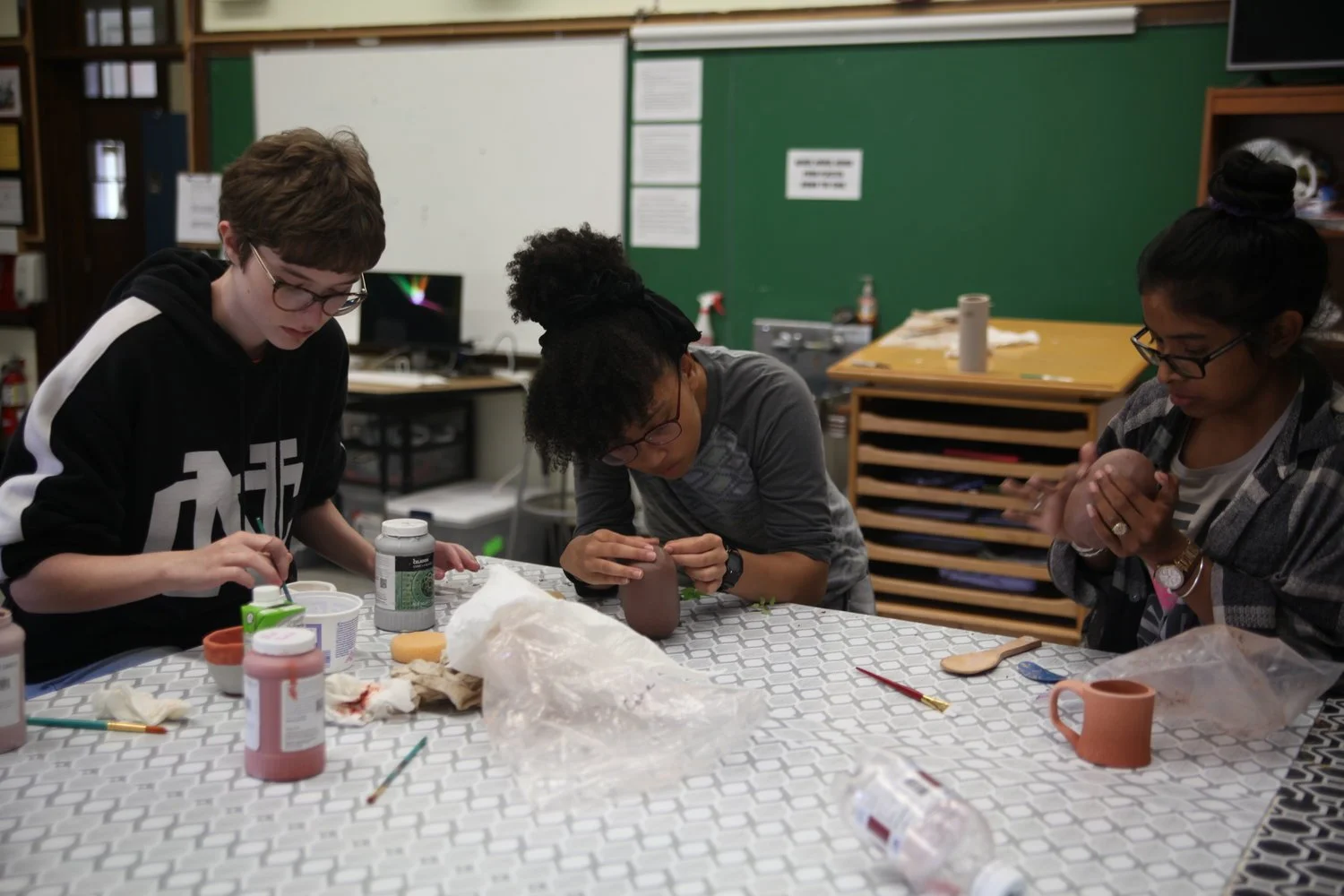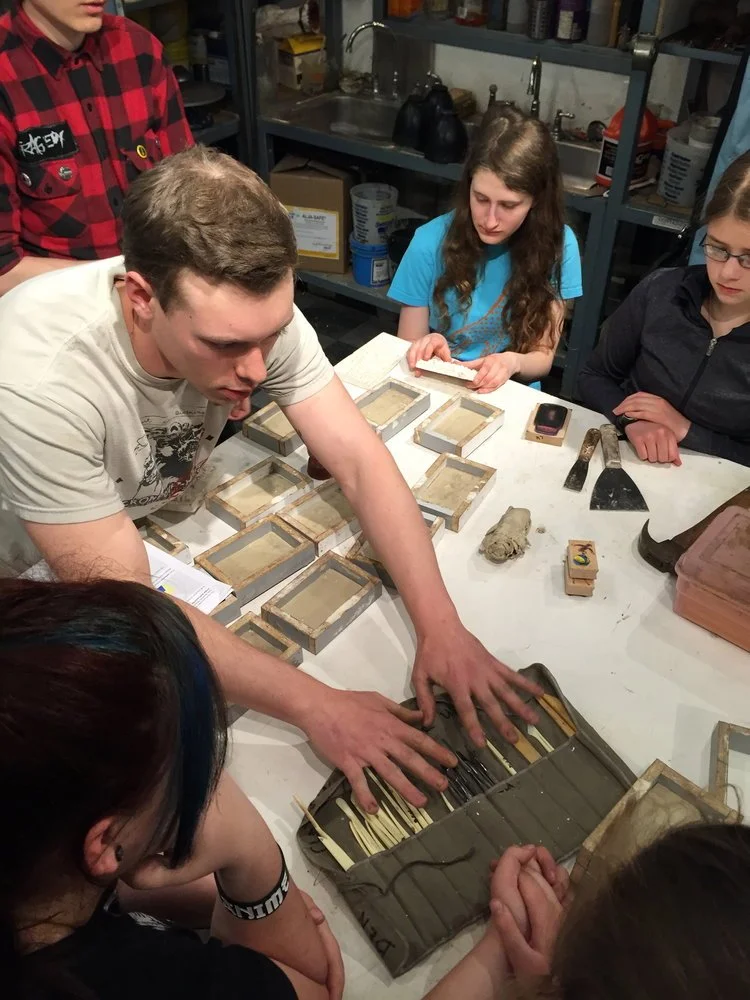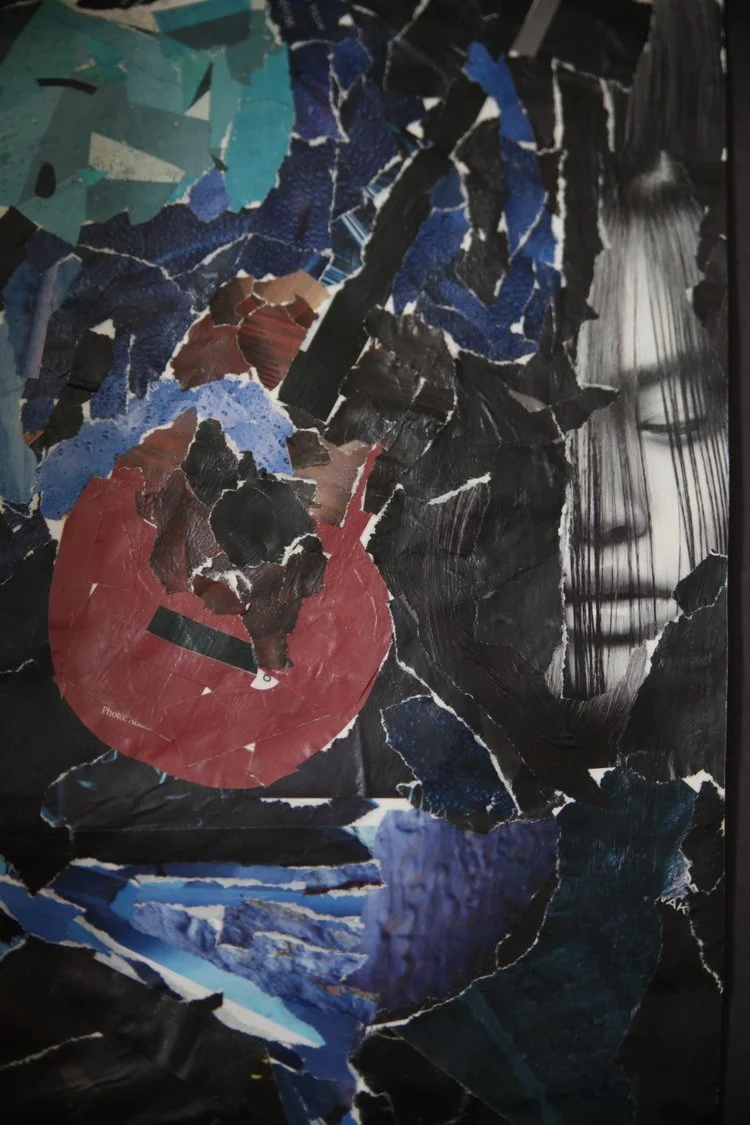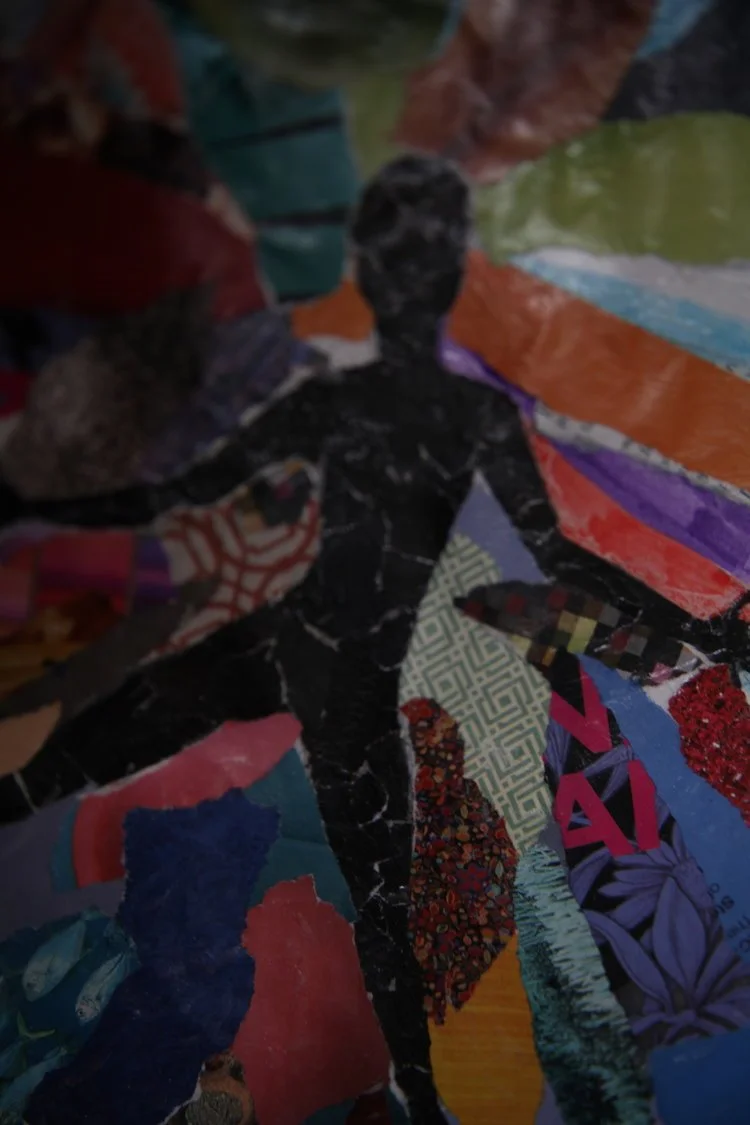Visual Arts
Meridian Visual Arts classes focus on helping students feel comfortable in the creative and critical studio environment, whatever form that may take now and in the future. While methods include formal instruction with a broad range of two-dimensional and three-dimensional materials, the underlying goal is not to create traditional artists. Students who initiate and select from the offered courses will have standard observational skills, understanding of elements and principles of design, and scaffolding of materials woven into the particular discipline they are focusing on. At the same time, the open structure emphasizes and encourages the artist’s ability to discuss and interpret their work and the work of others, supporting their growing ability to respond to assignments with originality, individualism, and confidence. By providing students with foundations in materials, techniques, and conceptual challenges, students grow in their preparation for the work that they do in the visual arts and across all disciplines.
To provide the groundwork for the many options that follow in Divisions 3 and 4, Meridian has created required visual arts courses for each Middle School Division. Each year, Div. 1 students learn a consistent curriculum, while still having the flexibility to select a more personal option for the remaining terms. Division 2 students take a full-year course that combines elements of visual arts, music, and theatre called Interdisciplinary Performance.
All Division 1 students at Meridian take foundations classes designed to provide the fundamentals of both 2-dimensional and 3-dimensional design. On even years, to align with the first trimester of the Humanities Heroes and Villains curriculum, students take an introductory Ceramics course. The handbuilding techniques that they learn and practice facilitate the execution of a Greek-style, coil-built pot that illustrates an invented origin myth or story. On odd years, Division 1 students take a one term 2-dimensional Foundations class to provide a survey of commonly-used materials, skills, and concepts that encourage students to begin to develop their own styles and voices.
As students advance to high school, their options expand to include sequences in courses such as Sewing and Fibers, Ceramics, and Adobe Illustrator. In addition, discipline- or material-specific offerings are planned by the art department based on student input, offering a project-based approach that reinforces and reiterates key questions and frameworks while reducing redundancy.









